Chapter 21
Almost ready to shed the shackles of his predecessors’ assumptions, Kepler takes a moment to demonstrate the limit of approximating truth using a false system. He constructs a “hypothesis” (a geometrical model based on two axioms, uniform and regular motion, and of which there could be any number of variations), to describe observed effects of a “true hypothesis” which is actually occuring in our universe.
Kepler’s system begins simply: he constructs a straight line, because the motion of Mars on its orbit will spend half of its time on each side of the straight line. Next, let a position be described on this line, around which the planet will orbit in a circle, with uniform motion. The system is perfect for observations taken twice a year, but a discrepancy arises when the planet does not appear where it is supposed to be after quarter periods. Uniform motion would move the planet quarter orbits in quarter periods, but it is observed from our position on the line that the planet's movements are 10½° off from the right angles we seek:
Uniform vs. Observed Motion
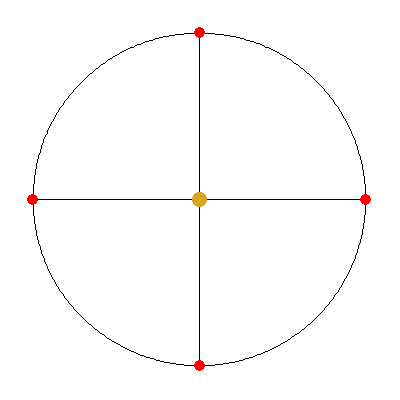
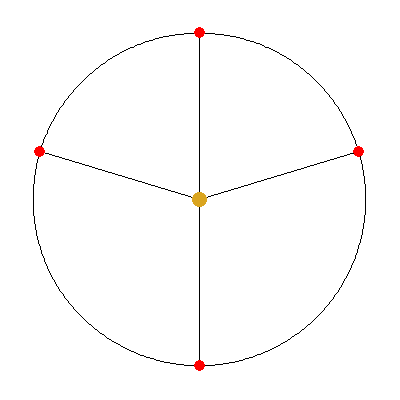
The observer is in the center. If Mars moved at a uniform rate around the observer, we'd expect to see it move equal amounts each quarter-year (left). But what we actually observe (right), is that Mars does not move evenly in equal amounts of time. It seems that it moves more slowly in the upper region of this diagram, as evidenced by the smaller motion in the same amount of time.
It seems like this observation is strikingly off, but Kepler points out that because "it is the nature of motions of this kind to undergo gradual intensification and remission, admitting of nothing sudden," the greatest discrepancy we could have found was in the quartiles, so we'll fix the error. In fact, the remedy is simple! Keep the observer where it is, and create an eccentric circle, so you can move the center of uniform motion to where it would see the observed positions as its mean positions.
Introducing an Eccentric
|
Now, rather than having the planet move uniformly about the observer, Kepler introduces a new circle (blue) around which the planet actually moves. The dashed lines indicate the planet's position at quartiles on its new circle of motion, and the blue dots indicate where it appears to be on the observer's circle. By choosing the correct location for this point of uniform motion, we can always account perfectly for the planet's position at four positions along its orbit, so long as its orbit be symmetrical. 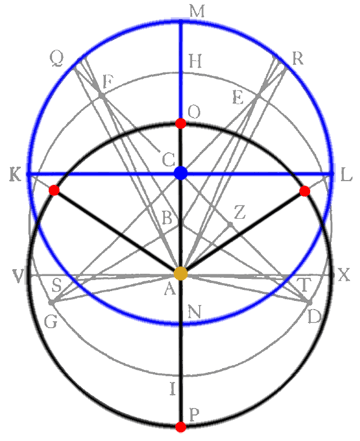 |
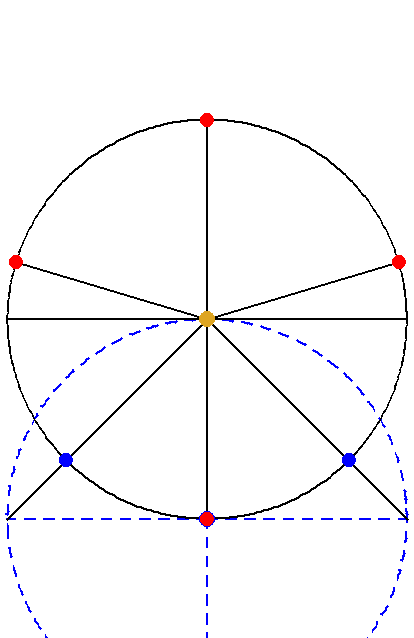
"And since it is correct at [these four points], the error (if any) will retreat to the four regions intermediate to those just mentioned, and will occur at the eights of the period, since the time is measured about C." (p.297) |
The Eighths
Therefore, let the angles MCK, KCN be bisected by two new lines through C intersecting the circumference at Q, T, R, S. The maximum error, if any, will be about these points. But the hypothesis also places the planet on the lines AQ, AR, AS, AT, at the eights of the period. Now suppose (as is true for Mars) that after the eighths of the periodic time the planet is not destined to appear on the lines AQ, AR, AS, AT, but instead is above the former two at AF, AE, and below the latter two at AG, AD. Therefore, if the former error KAV was 10½°, the present error QAF will hardly amount to a few minutes. For Mars, the magnitude of QAF or RAE is observed to be about 9', while SAG or TAD is about 28' (p.297)
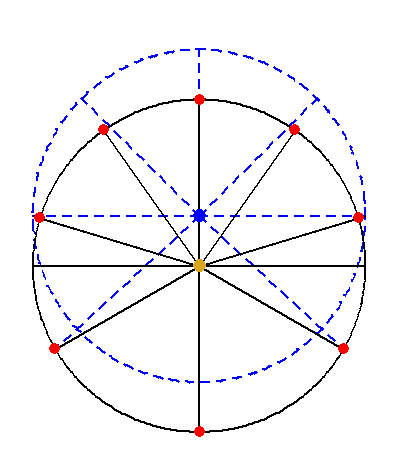 |
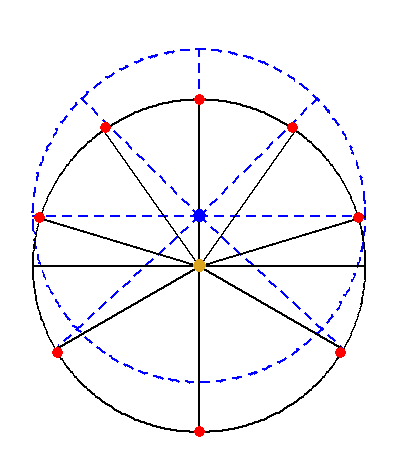 |
On the left, we have the result of dividing the blue circle evenly into eights at Q, T, R, S. On the right, we have the actually observed positions of the planet: AF, AE, AG, AD.
In the image on the right, only the red points have been moved: the black lines are exactly as on the diagram on the left, to make comparison easier. That is, the red points now correspond to F,E,G,D, while the black lines still point to Q,R,S,T.
One Last Change
We'll have to make another change to take this difference at the eighths into account:
[M]ove the center of the eccentric downwards to B from the point of uniform motion C, substituting HI for MN. The body of the planet would depart from the points Q, R, S, T, nevertheless remaining on the lines CQ, CR, CS, CT (because the measure of time stays at C), and would arrive at the points marked F, E, G, D... With this done, that error at the eighths of the period will also be absorbed, and the hypothesis will exhibit the longitude perfectly accurately at eight places. (p.297)Here, the planet moves upwards from Q,R to F,E in the upper part of the orbit, and downwards from S,T to G,D in the lower part, as the center of the eccentric moves downwards. Click here for a more exaggerated version. |
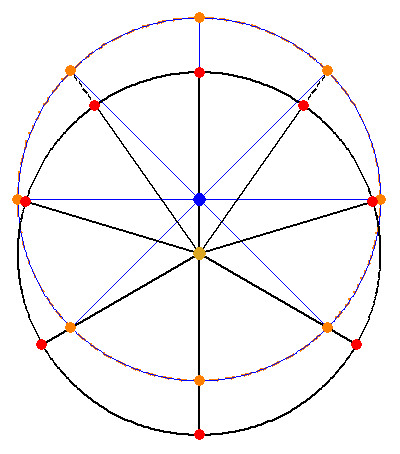
|
With this done, that error at the eights of the period will also be absorbed, and the hypothesis will exhibit the longitude perfectly accurately at eight places. Thus if any error remains, it will be at the sixteenths of the period, the points in between... And because the error of the second was greatest at the eighths of the period, and this is now absorbed, the part of the old error remaining at the sixteenths will be much smaller. Let us estimate it proportionally: just as the error of the first eccentric was 10½° while that of the second was 9' or 28', that is, one seventieth or one twenty-fifth of the former, let us now make the errors of the second that many times the errors of the third. Plainly, already at the sixteenths of the period, we will have driven the business down to within the limits of observational accuracy. (pp.297-298)
| On to Part III! |  |